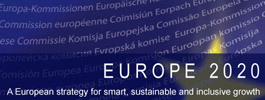by Theo Vermeire, Head of Department Nanotechnology, Occupational Health and Transport Safety Centre for Safety of Substances and Products, RIVM, The Netherlands. Chair of the Scientific Committees Working Group on the SynBio Opinions

SCENIHR, SCHER and SCCS Opinions on Synthetic Biology
Synthetic biology (SynBio) has already delivered important products to the market such as yeast-synthesized artemisinin and biodegradable plastics produced from sugars. There is a potential for substantial contributions to medicine, materials, chemistry, food, nutrition, energy, sustainability, waste treatment, and safety. Yet, like for many new and emerging technologies, there is controversy leading to fierce debates on SynBio’s potential for societal benefit, or risks.
The UN Convention on Biological Diversity held its 12th Conference of the Parties (COP 12) October, 6-17, 2015 in Pyeongchang, Republic of Korea. In a special session on SynBio, the Parties were urged “to take a precautionary approach ….when addressing threats of significant reduction or loss of biological diversity posed by organisms, components and products resulting from synthetic biology”. The COP urged Parties to approve organisms resulting from SynBio techniques for field trials only after appropriate risk assessments are carried out. This recommendation was an important goal for the EU, ensuring a good balance between the potential of SynBio and the need for precaution on the issue. The EU had a middle position and provided an important scientific contribution to the development of definitions through a joint preliminary Opinion from its Scientific Committees SCENIHR, SCHER and SCCS.
This first Opinion, adopted by the SCs on September 26, 2014, answered questions from the European Commission on the scope and definition of SynBio. In late December 2014, the European Commission Scientific Committees issued a draft second opinion on whether existing risk assessment methods are adequate for SynBio. Early 2015, it will be followed by a third opinion on research priorities for risk assessment. These three opinions, which are written by an interdisciplinary Working Group of 20 experts from Europe and the United States, could significantly contribute to develop a European and global SynBio policy. Although security issues concerning SynBio are important, the terms of reference pertain exclusively to safety and, thus, security issues are not being addressed in any of the three Opinions.
The first opinion lays the foundation for the two other opinions with an overview of the main scientific developments, concepts, tools and research areas in SynBio. Additionally, a summary of relevant regulatory aspects in the European Union, in other countries such as the USA, Canada, South America, China, and at the United Nations is included. It stresses that SynBio is currently encompassed within genetic modification as defined in the European Directives 2001/18/EC and 2009/41/EC and will likely remain so in the foreseeable future. The definition reads: ‘SynBio is the application of science, technology and engineering to facilitate and accelerate the design, manufacture and/or modification of genetic materials in living organisms.’ The opinion proposes an ‘operational’ definition based on present knowledge and understanding of the field of SynBio. It is acknowledged that it is difficult to accurately define the relationship between genetic modification and SynBio on the basis of quantifiable and currently measurable inclusion and exclusion criteria. Thus, in addition to the definition, a list of specific criteria was considered reflecting that SynBio covers any organism, system, material, product, or application resulting from introduction, assembly, or alteration of the genetic material in a living organism.
This definition has the advantage that it does not exclude the relevant and large body of risk assessment and safety guidelines developed over the past 40 years for GM work. Additionally, the present definition allows for the rapidly advancing nature of GM technologies and important nuance that supports the need for on-going updates of risk assessment methods, which will be addressed in Opinion II. However, the definition presently excludes two research areas commonly mentioned in the context of SynBio, bionanoscience (non-living nanomaterials made from the components of living organisms) and protocell research (efforts to synthesize living organisms from non-living materials), because they have not yet produced living systems. Nonetheless, bionanoscience and protocell research could one day produce living organisms, and thus are considered in the second opinion on risk assessment methodologies.
Opinion II will focus on risk assessment methodologies for the relatively new research areas of genetic parts libraries, designer cell chassis, DNA synthesis, genome editing, and xenobiology (engineering with non-canonical alternatives to DNA and RNA). The questions focus on the implications of likely developments in SynBio on human and non-human animal health and the environment and on determining whether existing health and environmental risk assessment practices of the EU for GMOs are adequate for SynBio. Additionally, the Scientific Committees were asked to provide suggestions for revised risk assessment methods and risk mitigation procedures including safety locks for a period up to approximately 10 years from now.
I would like to conclude that pressures for innovation and economic growth are high, but a parallel activity is needed to minimize health and environmental risks. These three opinions of the Scientific Committees are expected to contribute significantly to responsible research, development and innovation with regard to SynBio.






